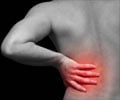Nefopam Medication Information
Learn everything you need to know about Nefopam-pronunciation, uses, dosage guidelines, indications, and when to take or avoid it.
Get up-to-date information on side effects, precautions, warnings, and proper storage to ensure safe usage.
Explore Nefopam brand names commonly used in India and internationally, along with detailed pricing information. Consult your healthcare provider for tailored medical advice.
Generic Name : Nefopam ICD Code : Y45.8 Therapeutic Classification : AnalgesicsBrand Names or Trade Names of Nefopam
India :
International :
Acupan, Dosidol, Glosic, Nefogesic, Nefopam, Nisidol, Oxadol, Panagesic
Why is Nefopam Prescribed? (Indications)
This medication is a non-opioid analgesic, prescribed for relief of moderate to severe pain.When should Nefopam not be taken? (Contraindications)
It should not be used with monoamine oxidase inhibitors (MAOI), children under the age of 12 years and hypersensitivity.What is the dosage of Nefopam?
Adult: Oral- The recommended dose is 30–120 mg/day, in divided doses.How should Nefopam be taken?
It comes as a tablet to take by mouth, with or without food.What are the warnings and precautions for Nefopam?
• Caution should be exercised in patients with history of liver or kidney problems, heart attack, urinary obstruction, epilepsy, any allergy, elderly, during pregnancy and breastfeeding.• It may cause dizziness or drowsiness, do not drive a car or operate machinery while taking this medication.
 MEDINDIA
MEDINDIA
 Email
Email




